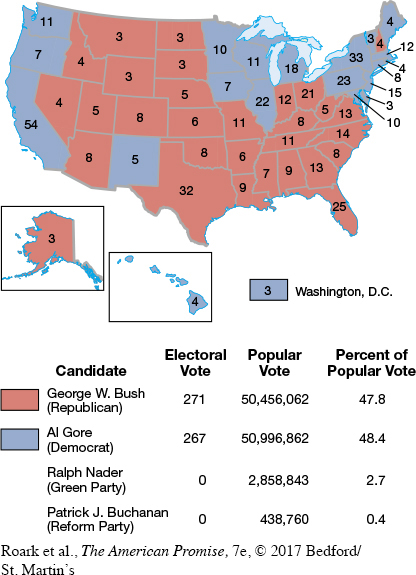The American Promise: Printed Page 908
The American Promise, Value Edition: Printed Page 823
The American Promise: A Concise History: Printed Page 940
The Disputed Election of 2000

The oldest son of former president George H. W. Bush, George W. Bush was the governor of Texas when he won the Republican presidential nomination. Inexperienced in national and international affairs, Bush chose for his running mate a seasoned official, Richard B. Cheney, who had served in three previous Republican administrations. Many observers predicted that the thriving economy would benefit the Democratic contender, Vice President Al Gore, and he did surpass Bush by more than half a million votes. But Florida’s 25 electoral college votes would decide the presidency. Bush’s tiny margin in Florida prompted an automatic recount of the votes, which eventually gave him an edge of 537 votes in that state.
The American Promise: Printed Page 908
The American Promise, Value Edition: Printed Page 823
The American Promise: A Concise History: Printed Page 940
Page 909The Democrats asked for hand-